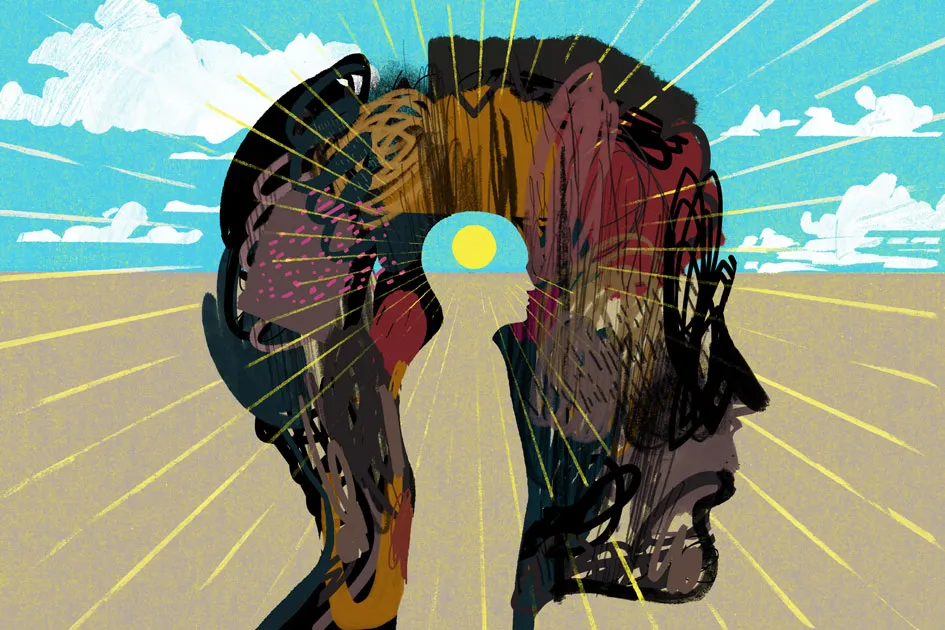On Easter, we gather to celebrate the dawn of this new creation in the resurrection of Jesus. From a garden tomb outside of Jerusalem, the curse of sin and death began to unravel as Jesus opened His eyes, sat up, and neatly folded the linen cloth that had adorned His lifeless head just moments before. The risen Son of God was the first fruits of a new harvest, a preview of the resurrection life His followers will experience at the end of history.

But there was another resurrection that weekend.
Matthew tells us that on Good Friday, “the tombs were opened, and many bodies of the saints who had fallen asleep were raised” (Matt. 27:52). We don’t often hear about this other resurrection. In fact, Matthew is the only gospel writer who even mentions it. This has led some scholars to question the account’s validity or to recast it as a unique literary device designed to emphasize the significance of Christ’s death. But it’s hard to imagine figurative people waking from death, “coming out of the tombs … enter[ing] the holy city and appear[ing] to many” (Matt. 27:53). If we are to take Scripture as God’s Word, we must deal with it on its own terms. We must allow God to speak for Himself. Though Matthew provides few details, I believe this Good Friday resurrection of saints reveals something foundational about God’s character and is meant to encourage those of us who humbly wear the badge of “saint” today. But to better understand the passage and its context, we must first consider who these revived believers were.
The New Testament writers do not toss around the term “saints” lightly. In the Gospels and Epistles, the word invariably refers to faithful followers of Jesus. There’s no reason to seek another meaning here. And while it’s exhilarating to consider the possibility these were Old Testament saints rising from the dead to witness Jesus’ greatest miracle, such a scenario seems unlikely. Matthew tells us that these men and women “appeared to many” in the holy city, implying that they were known. In a world without photography, only those remembered by the living could be recognized.

In the moment, these risen disciples served as witnesses to Christ’s power over death and His claim to be the Jewish Messiah. The crowds gathered on Golgotha may have seen only a peasant-carpenter-turned-itinerant-preacher offering up His life in a final gasp, but Jesus’ death was not a defeat; it was a victory. On the cross, He made a way for men and women to draw near to the heavenly Father who loves them. That’s why, in the same passage in which he mentions the resurrected saints, Matthew also tells of the veil of the temple being torn in two (Matt. 27:51).
The curtain was a safety measure to keep people from entering into God’s overwhelming presence. Sin can share no quarters with holiness, so except for the high priest on the Day of Atonement, not a soul was permitted into the most holy place. But when Jesus died, this veil—four inches thick, according to early Jewish tradition—was torn from top to bottom. Sin’s power to keep us from God was broken through Christ’s sacrifice. And since the wages of sin is death (Rom. 6:23), those followers of Jesus who walked from their tombs did so as evidence that the costly payment had been made. Their triumphant march into Jerusalem signaled the coming undone of death’s long hold on the children of God.
But in the end, death still overtook them. Each and every one of the people who returned to life that Easter weekend, save Jesus Himself, died and was buried again. It is only in Christ that we see the full promise of the imperishable, glorious bodies we will receive at the final resurrection of the dead (1 Cor. 15:52)—bodies that are no longer subject to pain, brokenness, and the relentless stalking of time.

So why, then, did God permit these saints a temporary reprieve from death? Those who put their trust in Jesus during His earthly ministry yielded to Him as the promised Messiah and rightful King of Israel. But those who died before Jesus’ crucifixion and resurrection missed out on how, precisely, God would make provision for their salvation. Trusting in Jesus as He walked through Judea and Galilee, teaching about the kingdom of God, casting out demons, and healing the sick, was just that—trust.
These men and women were still sinners, and God was still holy. They had nothing to commend them to heaven except Jesus Himself. And they didn’t know how God would bridge the divide. It seems that the Lord, in His great kindness, permitted these saints to see with their very own eyes the salvation He had secured for them at such great cost. Perhaps that’s why these disciples woke from death when Jesus died, and why they left their tombs when the Savior left His (Matt. 27:52-53). They were invited into the waiting—that long Saturday when all hope seemed lost—so that when Jesus appeared on Sunday morning, these who had also experienced the grave would be among the first to herald His glorious resurrection, a fitting assignment for men and women who had trusted Him in both life and death.
We who know Christ today have also been invited into the waiting, into the period between His first and second comings. And though the mystery of salvation has been revealed to us, faith still requires trusting God with our lives—every day from now until our future resurrection. If we are not still alive when that day comes, we too will know what it is to awaken to God’s unfolding redemption as it’s happening, to see it with our very own eyes.
Illustrations by Jack Unruh





